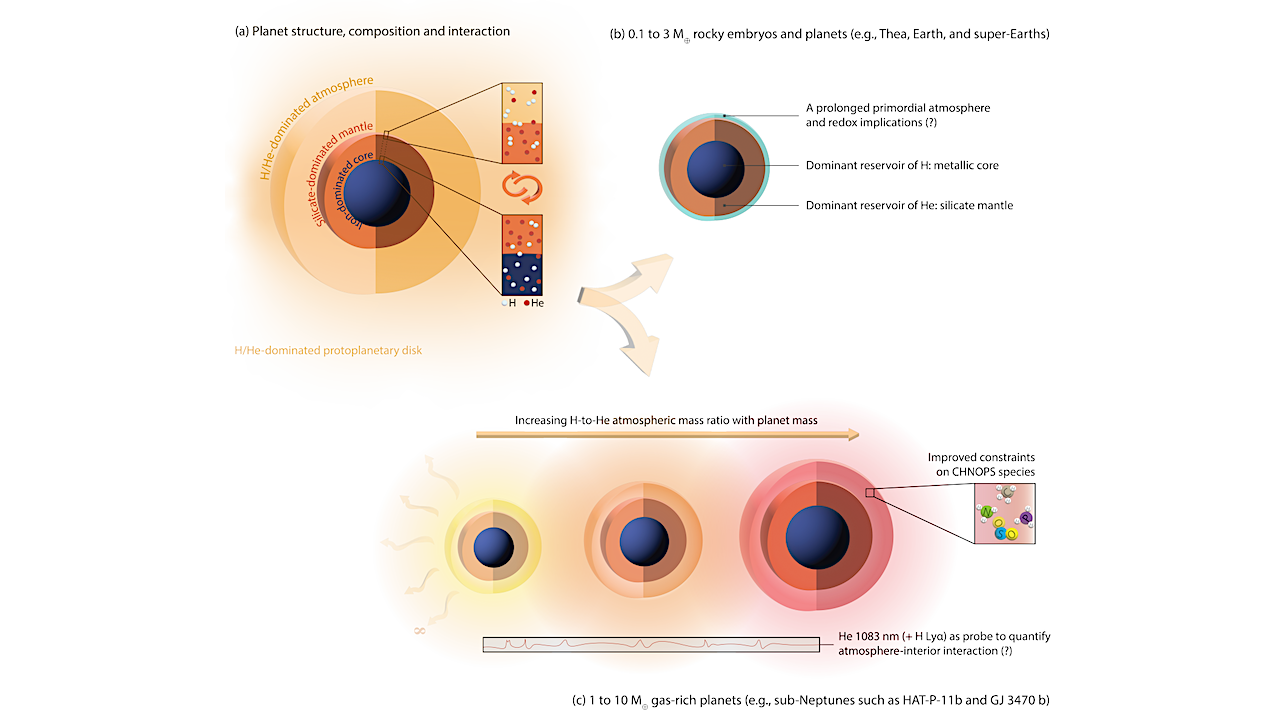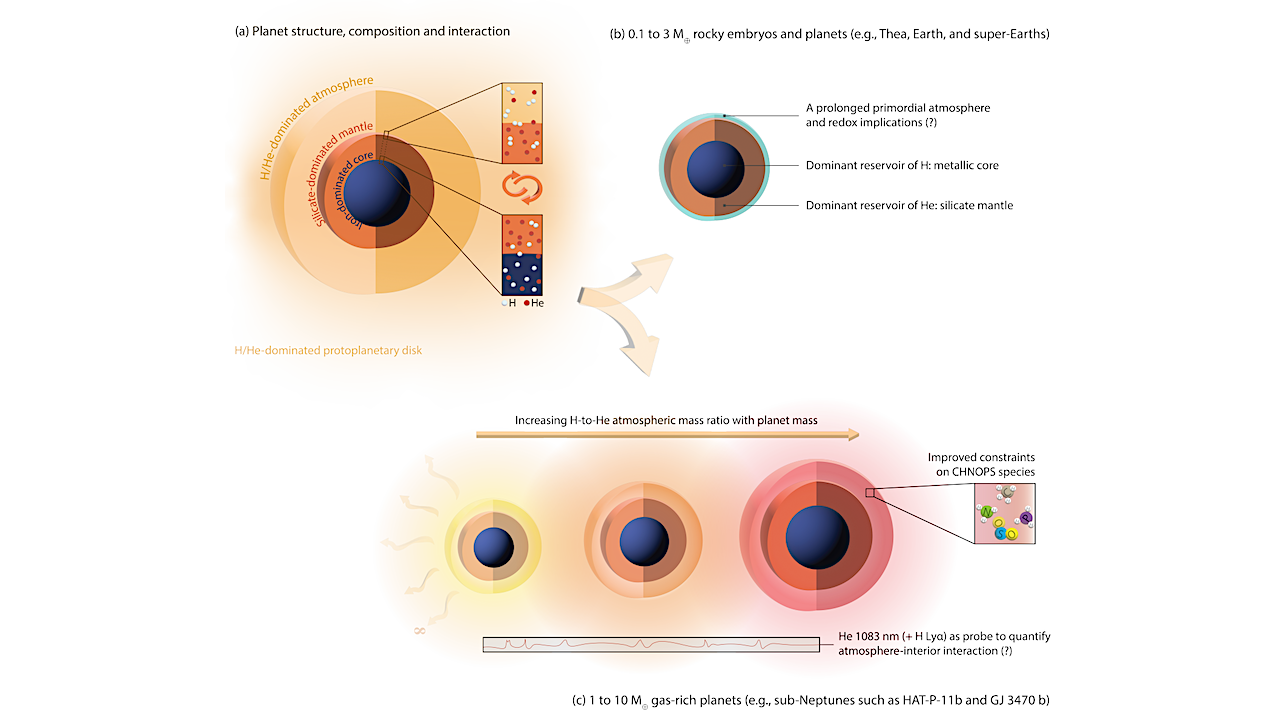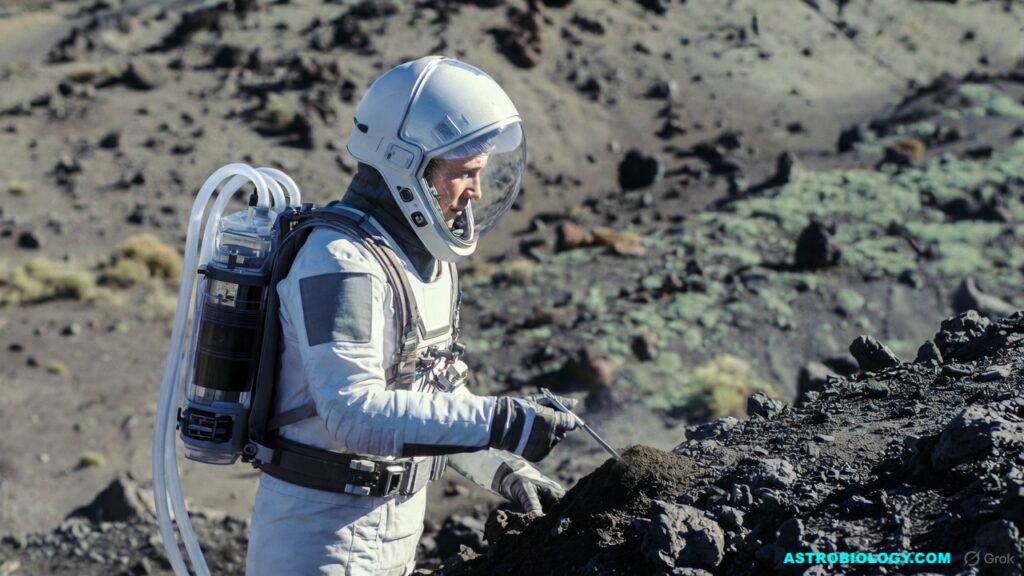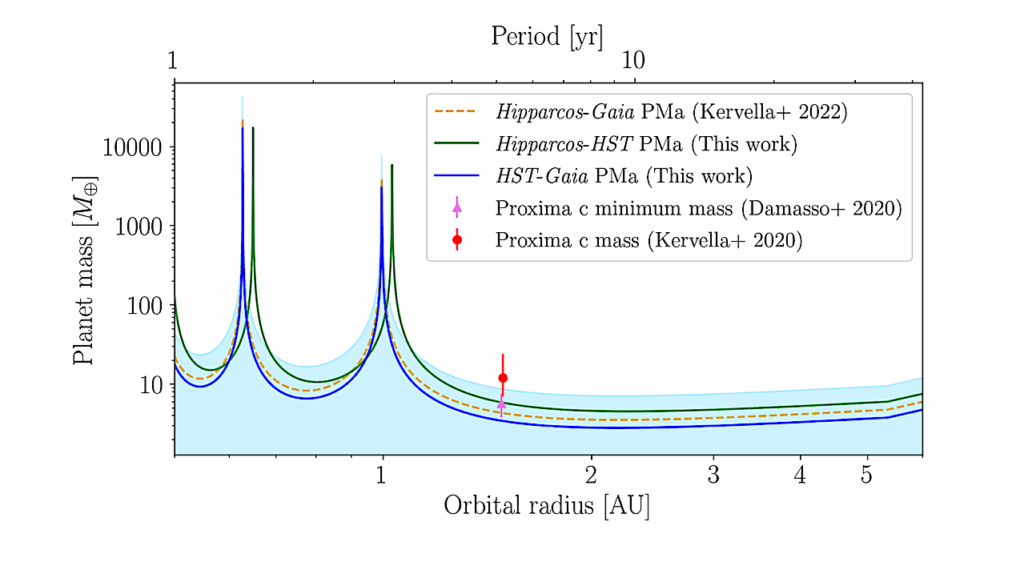Now Reading: The Fate of Hydrogen and Helium: From Planetary Embryos to Earth- and Neptune-like Worlds
-
01
The Fate of Hydrogen and Helium: From Planetary Embryos to Earth- and Neptune-like Worlds
The Fate of Hydrogen and Helium: From Planetary Embryos to Earth- and Neptune-like Worlds


Illustration of atmosphere–mantle–core coupling across rocky embryos to gas-rich planets. Mantle convection acts as a planetary-scale “conveyor belt,” facilitating chemical communication between the atmosphere and the core. The efficiency of this volatile cycling—potentially probed by the He 1083 nm feature, especially when combined with H Lyman-α—depends on the partition coefficients derived in this study. It governs the redistribution of H and He, the timescale of primordial atmosphere retention, aspects of redox balance in secondary atmospheres, and model predictions for the abundances of atmospheric CHNOPS species, ultimately shaping the H-to-He ratio in the atmospheres of Earth- to Neptune-like planets. — physics.ao-ph
Hydrogen, helium, silicates, and iron are key building blocks of rocky and gas-rich planets, yet their chemical interactions remain poorly constrained.
Using first-principles molecular dynamics and thermodynamic integration, we quantify hydrogen and helium partitioning between molten silicate mantles and metallic cores for Earth-to-Neptune-mass planets.
Hydrogen becomes strongly siderophilic above ∼25 GPa but weakens beyond ∼200 GPa, whereas helium remains lithophilic yet increasingly soluble in metal with pressure. Incorporating these trends into coupled structure-chemistry models suggests that majority of hydrogen and helium reside in planetary interiors, not atmospheres, with abundances strongly depending on planet mass.
Such volatile exchange may influence the redox states of secondary atmospheres, longevity of primordial envelopes, predicted CHNOPS abundances, and emergence of helium-enriched atmospheres, while He 1083 nm and H Lyman-α lines provide potential probes of atmosphere-interior exchange. These findings link atomic-scale interactions to planetary-scale observables, providing new constraints on the origins of Earth-to-Neptune-sized worlds.
Akash Gupta, Haiyang Luo, Jie Deng, Adam Burrows
Comments: 38 pages; 9 figures
Subjects: Earth and Planetary Astrophysics (astro-ph.EP); Materials Science (cond-mat.mtrl-sci); Atmospheric and Oceanic Physics (physics.ao-ph); Computational Physics (physics.comp-ph)
Cite as: arXiv:2510.24956 [astro-ph.EP] (or arXiv:2510.24956v1 [astro-ph.EP] for this version)
https://doi.org/10.48550/arXiv.2510.24956
Focus to learn more
Submission history
From: Akash Gupta
[v1] Tue, 28 Oct 2025 20:41:18 UTC (18,956 KB)
https://arxiv.org/abs/2510.24956
Astrobiology, Astrogeology,
Stay Informed With the Latest & Most Important News
-
 012024 in Review: Highlights from NASA in Silicon Valley
012024 in Review: Highlights from NASA in Silicon Valley -
 02Panasonic Leica Summilux DG 15mm f/1.7 ASPH review
02Panasonic Leica Summilux DG 15mm f/1.7 ASPH review -
 03From Polymerization-Enabled Folding and Assembly to Chemical Evolution: Key Processes for Emergence of Functional Polymers in the Origin of Life
03From Polymerization-Enabled Folding and Assembly to Chemical Evolution: Key Processes for Emergence of Functional Polymers in the Origin of Life -
 04How New NASA, India Earth Satellite NISAR Will See Earth
04How New NASA, India Earth Satellite NISAR Will See Earth -
 05And Thus Begins A New Year For Life On Earth
05And Thus Begins A New Year For Life On Earth -
 06Astronomy Activation Ambassadors: A New Era
06Astronomy Activation Ambassadors: A New Era -
07SpaceX launch surge helps set new global launch record in 2024





















